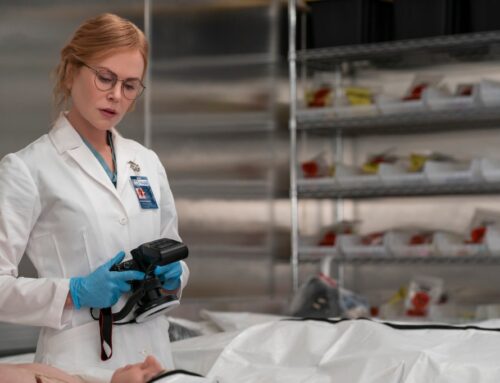Amazon CTO Werner Vogels’ Predictions for 2026
November 25, 2025
AWS re:Invent is now an annual tradition that goes back to 2012. One key part of the event is Amazon CTO Werner Vogels delivering the closing keynote, which in recent years has focused less on releasing new products and instead focused on the bigger picture and sharing lessons from the cloud computing trenches.
Another tradition is that Vogels also releases a set of predictions for the coming year at the event — and for the last few years, I’ve sat down with him at re:Invent to discuss those with him. But this year is a bit different: Vogels is releasing the predictions before the event and in this year’s conversation, he hinted that while he’s not retiring, this may be his last re:Invent keynote.
“This is sort of the last time,” he told me when I asked him why he switched things up this year. “It’s time for the voices to come up. There’s so many brilliant engineers with so many experiences that I think — you know, I’m not leaving Amazon with anything like that. I’m not retiring or anything. I’ve tons of great ideas that I would like to pursue, but it is time for Amazon customers to hear some younger voices that have tons of experience of building AWS.”
Calling in from Dubai, Vogels noted that he’s been at Amazon for 21 years now, seeing the company go from selling books to becoming the giant it is today. But he also noted that when he first came to Seattle, he was still an academic and only really went to give a talk at the company.
“Amazon, it’s a bookshop. It’s a web server and a database. How hard can that be?,” Vogels told me about his first thoughts about the company at the time. “Until I actually did go — and one glimpse into the Amazon technology kitchen blew me away. These guys were operating at a scale that nobody else in the world was, and just helping them become more reliable, get better control over their systems, maybe moving single points of failure — so many things that that were fun, that actually still keep me keeping on going today.”

Photo courtesy of Amazon.
Vogels’ Predictions
As for his predictions this year, it’s maybe no surprise that they center around AI and its impact on developers, but also society as a whole. In total, there are five predictions here, though Vogels told me that he originally had far more on his list. The ones that made it into the list range from using robots to combating loneliness to quantum-safe encryption and the increasingly fast pipeline from military tech to consumer products.
Below are excerpts from our conversations about each one of them. The transcript was lightly edited for readability.
1. Loneliness: Companionship Is Redefined for Those Who Need It Most
Werner: The first prediction, and I especially put it up front, is the one about loneliness. And if you have lots of friends and lots of colleagues and whatever, you probably don’t even know what loneliness is. But for a very large group of people, whether they’re elderly or younger, it’s a big problem for them. It actually triggers diseases. It makes people unhappy, depression, all these kind of things. Now we can build technology to help some of these people already, getting them out of their depression.
I remember, actually, almost at the beginning of Alexa, I heard a story of a man who was at the beginning of dementia, and he told me — I actually spoke to him — he told me that he could see these caregivers getting irritated because he asked the same thing over and over and over again. And then he got an Alexa, and he put a sticker on it because he didn’t want to forget what she was called. But he said, “I can ask her anything I want. She never gets angry.”
And so that was not necessarily why we built Alexa, but it’s a side effect of technology that helps people. And especially where we can help people overcome depression or are able to communicate better with their caregivers—if we can build devices for that, absolutely. And it’s amazing that actually a lot of people treat their devices as pets. They’re given names. There’s the story, of course, about Roomba from iRobot. About 80% of the Roombas have a name. They’ve been given a name. And there was one person that actually sent the Roomba back because it was broken, and the company said, “We’ll send you a new one.” And he said, “No, no, no, no. Meryl Sweep needs to come back.”
2. The Dawn of the Renaissance Developer
Werner: I think we need to evolve just as much as our tools evolve. I learned 68000, COBOL, and Pascal in school. Nobody programs that anymore. And after that we got C, we got C++, and we got Java, and we have got Python, and there will be 10 more. Now everybody is guessing over Rust, rightfully so, I think. But you know, there’s something else that will figure out, something else, another problem to solve.
This has always been the case. We always learned new technologies as developers. And you know what? Often, we were ahead of our boss asking us. “Oh, I’ve heard about this COBOL thing. I already read the book. I can build something for you.” COBOL programmers these days get paid well.
[Nvidia CEO] Jensen [Huang], actually — I saw an interview with him where someone asked him: “Will AI eventually overtake the capability of your brain?” And Jensen said, “You know what? Maybe there’s 20% of your work that AI can do for you, or maybe 50%. But that’s it.” There are things in our creativity, things in our curiosity that these machines don’t have.
And that’s why I’m bringing it back to the Renaissance, because the Renaissance just came out of 1,000 years of Dark Ages. And before those 1,000 years, Egyptians and the Romans and the Arabs had done enormous work on math and things like that. And suddenly all of this came back again. And as such, everybody needed to learn new tasks. It was no longer sufficient to be just a carpenter.
And that’s how I see the development of engineers happening as well. There was a time when it was sufficient to be a back-end developer. You knew exactly what you needed to do. But now you need to have a broader view. Not just other languages—you need to know how the business is being run.
So I call this a T-model, where you go deep, but you also need to have this polymath kind of thing.
3. Quantum-Safe Becomes the Only Safe
Werner: I had a prediction, I think, two or three years ago about where we were [with quantum computing], and I think my prediction was 10 years out — and it’s no longer 10 years out. Four to five years.
Frederic: The old joke is that it’s always been five years out.
Werner: Yeah, I said 10, so I wasn’t really joking. I think we can get them to a reliability level within five years. The problem is not the quantum machinery. That’s not the problem. The problem is that there is data harvesting happening already. There’s data harvesting now about your medical information, your financial information, that nobody can read because it’s encrypted. But five years from now, it will be.
I think as big companies, we should really push our customers to make sure that they use the right technologies. We built something — originally was called S2N, Signal to Noise. SSL, I think, has half a million lines of code. And so we thought, that’s because there’s all these different variations. We thought it’s not necessary. There’s only one or two that you use. So we named it S2N TLS, I believe. And we have the ability to already put post-quantum encryption in there. So that’s one thing.
The bigger problem is your garage door. Your garage door runs a little machine that runs Linux that you haven’t updated in probably the past two years. Or all sorts of other devices — take hotel cards.
And this is not a joke like the year 2000, “the world will go up in flames” — well, nothing happened. But given that this is something where there are enough state actors interested in, there are enough criminal actors interested in, we will need to take action now if we don’t want to be in big problems in five years.
It is as big as — it may even be bigger than the extortion techniques that you see now with your data being held hostage and things like that. This is going to be a much bigger problem. And as big companies, we should make sure that our customers understand this. Almost every conversation with a customer these days, I end with, “Have you thought about encryption?” “Yes.” “Start thinking. And start thinking how you’re going to address this. Is it just with a firewall? Are you going to re-encrypt all your data?”
There’s tons of solutions. But I do think my customers are hearing me, and that’s a good thing.
4. Defense Technology Changes the World
Werner: I thought, let me talk about something that I’m normally not very positive about, and that is war. Two days ago, I was here in Dubai at the air show, and I thought that’s a great moment to start asking people how much of military technology makes it actually into civil technology. Almost everything except the exploding parts makes it into civil technology.
And you know what? Without DARPA, we wouldn’t have had the internet. We wouldn’t have GPS. There’s so many military technologies that, over time, have made it into civil technology. Now, if I compare the amount of money being spent in defense innovation and compare that with civil — there’s a lot more money going into the military industrial complex. So there are innovations happening there where we as civil engineers can actually benefit from over time.
Frederic: Do you see any recent examples of that as well?
Werner: I met this company that was focused on transporting hearts or livers from one hospital to another hospital, and the drone technology that they were using is military drone technology. And I worked with a company called Help.NGO, who work on big disasters and things like that, and they have a lot of former military technology. They’re a Polish company. They have a lot of former [military] technology that they are using on a daily basis in the big disaster areas.
Are there negative stories? Yeah, and I hate those as a technologist. I mean, if you hear — I just saw an interview on the BBC with a doctor who spent two years in Gaza. And he said what happens is they will bomb a tent camp and then very small drones will come after that and shoot pellets at little kids. And they won’t die, but they’ll lose a leg, or they’ll lose an arm. And if I think about the fact that some of my technology may be used in that, it scares me.
Frederic: And there have been a lot of arguments about the big technology companies [and their involvement with government organizations].
Werner: Yeah. I mean, I also — we have a lot of customers in Ukraine, and if I hear how they are basically building technology from the ground up, as cheap as possible for defense, that is something that I think — yes, I don’t like war, but if I need to be on a good side, then I would love to be on the good side.
5. Personalized Learning Meets Infinite Curiosity
Werner: I always was a big fan of Ken Robinson. Ken Robinson was a former college professor in creativity who looked at creativity in kids and saw how almost every kid was creative —
Interviewer: And we killed it.
Werner: Until they got to school. We sent them to school, and then they all became conformists. They all had to learn the same thing. There was no individual teaching that would be really for you. And I honestly believe that, you know, what we see here in ADHD, for example, could have been avoided by much better targeted learning systems for the individual.
I’m not keen on giving a kid an iPad and having them actually learn from that. But if it means that I can get you exactly what motivates you, that’s great, right? Curiosity is what we kill in kids. And curiosity drives you to learning. I think we need to make sure that we keep kids curious, that we don’t kill that, because curiosity is the precondition to learning. And you learn with lots more fun if you’re curious.
If we can continue to do that — but it’s hard to have a class with 40 kids and keep them all curious. That’s very hard. You know, looking at individuals.
And we’ll finish this off with a little joke that Ken Robinson actually told. He was a teacher, and there was one kid in the class, one girl, who actually never really paid attention until drawing class. And then he walked up to her and looked at her, and he says, “What are you doing?” She says, “I’m drawing God.” He says, “But nobody knows how God looks like.” And she says, “In a few minutes they will.”
Frederic: As you were saying that, I was thinking: Is there a middle ground there between us, supporting the teachers with the technology without overwhelming the students? There are a lot of arguments that screens in classrooms are not the best thing, right?
Werner: It’s one of Robinson’s points as well. He says there are no good schools, but there are good teachers. And what can we do to help teachers be more individualized and have more time to spend?
I mean, look at — I don’t know how many open positions for teachers we have. And at the same time, as governments, we’re not spending terribly much money on education, are we? And this is the most important part in a kid’s life, and we’re not spending the money on it. We’re spending it on military planes.
Do you know Ted Lasso, the TV show? There’s this scene where he plays darts against the owner of the club. And he tells his story. He said, “At one moment, I drove past a wall. It says, ‘Be curious.’” And he said, “Now I realize why all these kids were bullying me. They were never curious about who I was. They were just bullying me.”
And curiosity — let’s keep curiosity alive. All the time. All the way till you’re sitting there on your couch with your mechanical cat and stroking it. And if you’re still curious, you’ll have a great life.
GroupCreated with Sketch.
Search
RECENT PRESS RELEASES
Related Post




